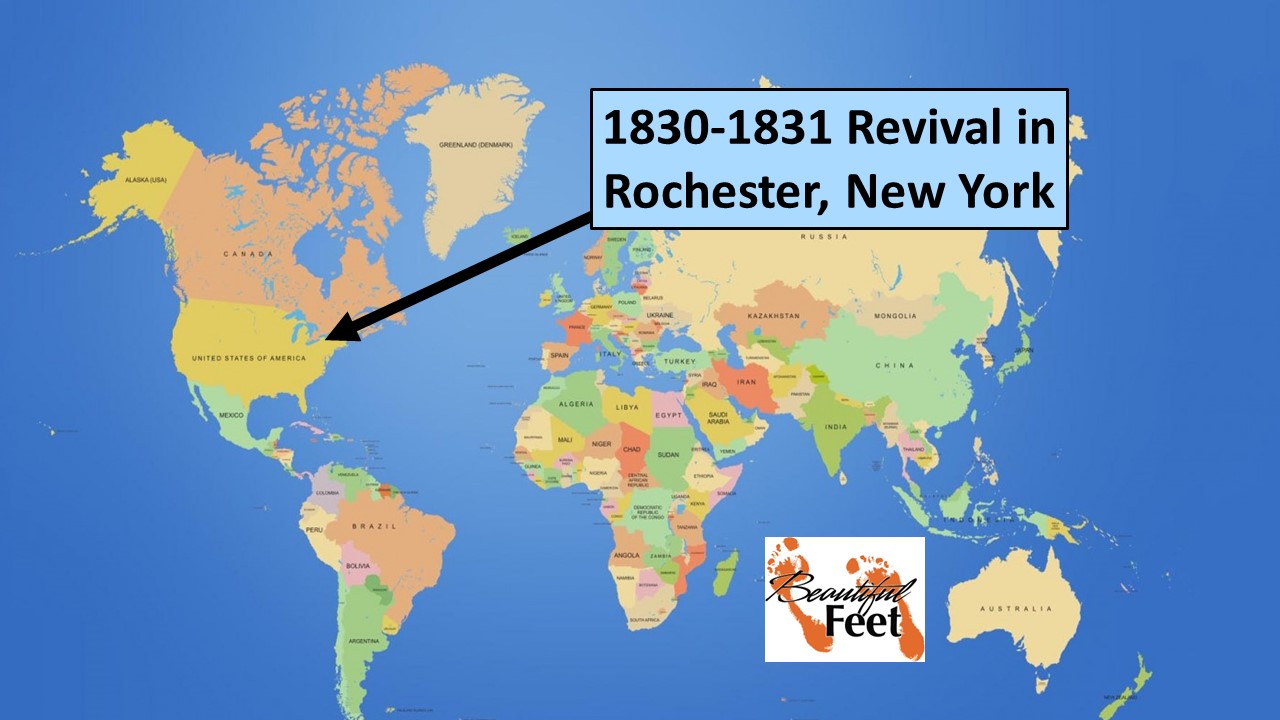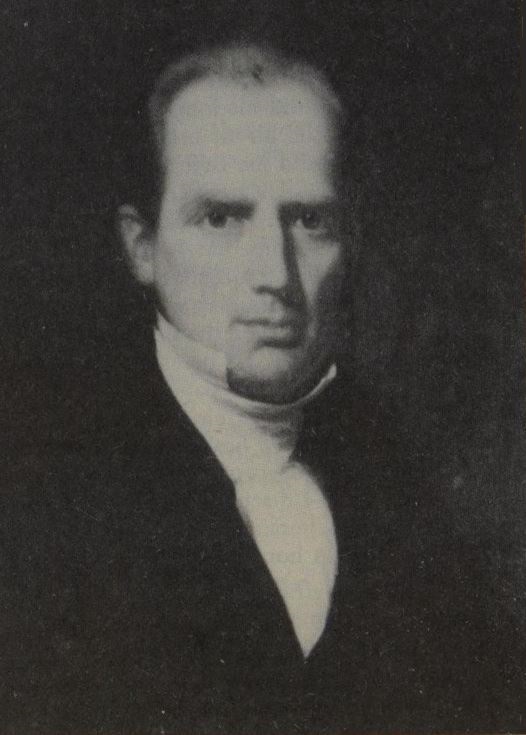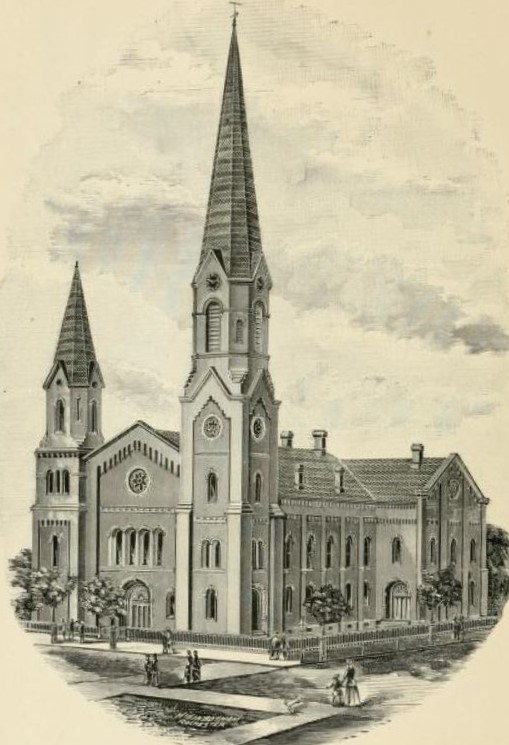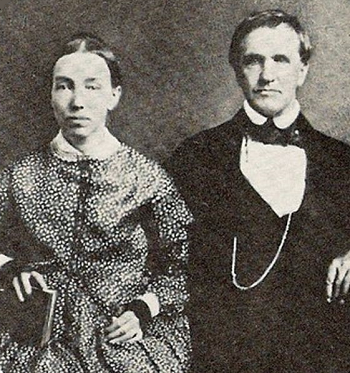1830-1831 Rochester, New York (5 revivals)



Charles Grandison Finney – Father of modern revivalism and the leading figure of the Second Great Awakening
Introduction
Charles G. Finney’s (1792-1875) unique methods of evangelism earned him the title of the “father of modern revivalism.” His methods paved the way for other mass-evangelists, like Dwight L. Moody, R. A. Torrey, John W. Chapman, Billy Sunday, and Billy Graham, who adapted and built upon Finney’s methods.
Background Information
With this revival account being one in a sequence of revivals during the life of Charles G. Finney, we recommend first reading our accounts of the initial revivals he was involved with in the northern and central part of New York State:
► 1824 Evans Mills German Settlement Revival
► 1824 Antwerp, New York Revival
► 1824 Revival at Perch River and Other Locations
► 1825 Revival in Gouverneur, New York
► 1825 Revival in De Kalb, New York
► 1825 Revival in Western, New York
► 1825 Revival in Rome, New York
► 1826 Revival in Utica, New York
► 1826 Revival in Auburn, New York
► 1826-1827 Revival in Troy, New York
► 1827 New Lebanon & Stephentown Revivals
► 1827-1829 Revival at Wilmington and Philadelphia
► 1829 Reading, Pennsylvania Revival
► 1829 Lancaster, Pennsylvania Revival
► 1829 Columbia, New York Revival
► 1830 New York City Revival
Introduction
The 1830 – 1831 Rochester Revival was the revival Charles Finney is most known for. The Presbyterians of that time labeled that time period, beginning in mid-1830, as being “a year of the Right Hand of the Most High.”
Condition of Rochester Prior to the Revival
► In 1827 the life of the church was gone. Conversions not only stopped, but church membership increasingly dropped through 1830.
► In 1827 there were 100 businesses in Rochester that had a license to sell alcohol, and drinking was part of social life—and with that drinking came all the evils associated with it.

The Start of the Revival
The Rochester Revival did not commence upon Finney’s arrival, as it was already in progress, but he was the tool the Lord used to raise the revival’s temperature and cause it to burn much brighter and last much longer.
Asa Mahan, a minister from Pittsford, recalled:
In the spring and summer of 1830, months before Mr. Finney came to Rochester, and before it was known that he had thought of doing so, a visible change, from no known cause, came over the public mind. Scoffing at sacred things, and bitter opposition to religious truth, spontaneously disappeared. Our congregations on the Sabbath gradually increased, while an unwonted solemnity rested upon them in all sacred exercises. This was attended with occasional conversions in various directions.
Rev. Gleazen Fillmore, a Methodist minister, indicated that the start of the revival began in August of 1830, during a camp meeting in Henrietta, New York.
From this meeting we may date a powerful reformation in Rochester. After sixteen had professed conversion in our congregations, the Rev. Mr. Finney commenced his labours in the Presbyterian congregations, and the work became general through the village.
A report from the Rochester Observer also mentioned an increase in spiritual fervency prior to Finney’s arrival:
It is now four weeks since the Rev. Mr. Finney commenced his labors with us. At that time there was evidently more feeling and more of the spirit of prayer in all the churches than had existed for some time previous, and some solitary cases of conversions to encourage the hopes and gladden the hearts of the Christians.
From New York City to Rochester, New York
After Finney concluded his ministry with the New York City Revival, he spent time with his in-laws at Whitestown, New York, and then made a decision to accept an invitation to temporarily fill the pulpit for the Third Presbyterian Church in Rochester, which at that time was without a pastor.
Erie Canal
Taking a canal boat from Utica, New York, Finney and his family traveled to Rochester, and arrived there on September 10, 1830, staying till March 6, 1831. During the trip to Rochester another minister joined with him, and during a time of prayer with Finney, he said:
Lord, I do not know how it is; but I seem to know that thou art going to do a great work in this city.

Initial home Finney stayed at upon his family’s arrival in Rochester The owner was an elder at the Third Presbyterian Church.
Extraordinary Prayer
Finney not only preached every night, but during the days he was also engaged with leading an almost continuous series of prayer meetings.
► There were simultaneous prayer meetings in homes and churches through the town.
► Women would go in groups to make home visits to pray and evangelize.
► The high school classes stopped for prayer, as they couldn’t continue their studies due to the weeping brought on by their overwhelming conviction of sin.
► Businessmen closed their doors early to have family prayer meetings.
► There was a monthly prayer gathering that was attended by those from all denominations in the town, with attendance ranging from 100-300.
Notable Intercessors
One of the powerful intercessors that supported Finney with prayer was Abel Clary. Finney said of this man:
He was converted in the same revival in which I was. He had been licensed to preach; but his spirit of prayer was such, he was so burdened with the souls of men, that he was not able to preach much, his whole time and strength being given to prayer. The burden of his soul would frequently be so great that he was unable to stand, and he would writhe and groan in agony in a most wonderful manner. I was well acquainted with him, and knew something of the wonderful spirit of prayer that was upon him. He was a very silent man, as almost all are who have that powerful spirit of prayer.
Many Intercessors
Finney mentioned that it wasn’t only a few people that had given themselves to continual and persistent prayer. There were in fact many men and women who found themselves under a compulsiveness to pray.
I knew at the time a considerable number of men who were exercised in the same way,.. and a large number of women, partook of the same Spirit, and spent a great part of their time in prayer…. This Mr. Clary continued in Rochester as long as I did, and did not leave until after I had left. He never, that I could learn, appeared in public, but gave himself wholly to prayer. There were a good many cases in Rochester in which people were exercised with this spirit of agonizing travail of soul.
Read about other intercessors that worked with Finney with this link.

Third Presbyterian Church
Finney preached here during revival of 1830-1831 and again in 1842 after it had become the Second Baptist Church.
Initial Focus Was the Revival of the Believers
Finney knew that for the masses to be reached he had to first focus on the awakening of the believers who were already faithful in church attendance. For the first 2-3 weeks, all his sermons were directed to the believers. Once he had the cooperation and prayer support from the believers, he turned to preaching to those who were yet unconverted. Once that juncture was reached, the conversions began occurring at an alarming rate.
First Presbyterian Church Was Unsafe for Services
The First Presbyterian Church was built on the bank of the Erie Canal, and due to poor construction, it had begun to settle in an unsafe manner. With the large crowds, and the balcony being filled beyond capacity, the weight in the building made the walls bow out, creating the risk of the ceiling falling down.
During one service, with the church being packed, a rafter beam in the attic fell, knocking ceiling plaster down. The rafter falling sounded like a gunshot. The plaster fell on a lamp by the organ, making it sound like windows were breaking. It was then that a panic ensued, leading to a stampede toward the door. Some jumped out the windows, with several even leaping out into the canal.
In their desperation, some even stood on the backs of the pews, running toward the doors.
Of that rapid and mass exodus from the church, Finney said:
Several of them were considerably hurt, but no one was killed.
Bonnets, shawls, gloves, handkerchiefs, and parts of dresses…, scattered in every direction. I learned that a large quantity of female apparel, parts of female dress, was left in the aisles and scattered about the house. The gentlemen had very generally gone out without their hats, I believe; and many persons had been wounded and made sore by the awful rush.
Following that stampede, Finney began alternating services between the Second and Third Presbyterian Churches, with those of every denomination participating and working together.

Second Presbyterian Church, also known as the Brick Church
Methods Used to Promote the Revival
Here are listed a few of the methods used to promote and spread the revival. Yet even with these methods Finney knew that without
The special influences of the Holy Spirit, … all other causes would be totally and for ever in vain.
► Inquiry meetings were held “very frequently” in the mornings. These were meetings specifically for those who were ready to convert to Christ.
► Telling and retelling of revivals occurring in other locations. This was done well into other states, often producing revivals where the accounts were read.
► Distribution of tracts
► Fasting and prayer
► Early morning prayer
► Promotion of the abstinence of alcohol
► In addition to preaching nightly and three times on Sundays, Finney would also meet personally with anyone who was under conviction of sin and desirous of salvation.
► Women were used to spread the Gospel through home visits and prayer groups.
► Knowing that revivals were often spread and enhanced by being in close contact with them, people from all denominations would travel up to 100 miles to hear Finney preach.
The Anxious Seat
Possibly following the example of the Methodists, it was at Rochester that Finney regularly called people under conviction of sin to the front of the church to take a seat close to the pulpit. Doing so was an indication that they were ready to convert to Christ. Some referred to this seat as the anxious seat, or the mourner’s bench.
From Finney’s experience, he found that with the higher classes especially, their greatest fear was that others might find out that they were under the conviction of sin; they were too proud to let others know. The anxious seat helped to remove their stubborn pride.

Towns outside Rochester where Finney preached
During his stay in Rochester, Finney preached 98 times in the town’s three Presbyterian churches, as well as speaking occasionally in the towns of Clarkson, Brockport, Ogden, Henrietta, Canandaigua, and Penfield.
The revival didn’t only affect the Presbyterians. It was powerfully at work among all the churches throughout central and western New York State, and the churches became powerfully united in lifting the name of Jesus in every corner of society.
Results of the Rochester Revival
► The population of Rochester at the time of this revival was about 10,000, and 15-20% of the population was converted to Christ. This did not include those who were already part of churches and who made commitments, or recommitments to Christ.
► The New York Evangelist reported that almost every town within 40-50 miles of Rochester was blessed with a special presence of the Lord.
► Reporting on revivals during this time, the Boston Recorder wrote that during the first 4 months of 1831, there were 362 places that reported revivals, 150 of these being in New York State.
► The secretary of American Education Society was said to have written that within 6 months, “there were revivals that resulted in the conversion of not less than 50,000.”
► Church membership in Rochester doubled in 6 months.
► “Large numbers were converted every night.”
One convert stated:
You could not go upon the streets and hear any conversation, except religion.

Titus & Fidelia Coan
► The local high school experienced the conversion of 300 students, with 40 of them becoming ministers, and 40 missionaries. One of those missionaries became the wife of Titus Coan, the famous missionary in Hawaii (1836 Hawaiian Revival)
► Conversions were so numerous and so amazing, with high-profile people being converted, that it silenced almost all opposition to the revival.
► The most influential people in the community were converted to Christ (lawyers, judges, physicians, merchants, master mechanics, etc.) “those with wealth, talents, and influence—those who move in the highest circles of society.”
► The new church members came disproportionately from among businessmen, professionals, and master workers.
► The revival brought with it a rejection of alcohol. For a person to be genuinely converted, it was expected that they would oppose the consumption, production, and sales of alcohol.
► The prosecuting attorney in Rochester, who was converted during the revival, said:
I have been examining the records of the criminal courts, and I find this striking fact, that whereas our city has increased since that revival three-fold, there is not one third as many prosecutions for crime as there had been up to that time.
Thus crime has decreased two thirds, and the population has increased two thirds.
Finney quoted Lyman Beecher as having said:
That was the greatest work of God, and the greatest revival of religion, that the world has ever seen in so short a time. One hundred thousand were reported as having connected themselves with churches as the result of that revival. This is unparalleled in the history of the church and of the progress of religion.
Adding to Beecher’s quote, Finney added:
Taking the whole of that time, or perhaps from 1830-1835, there could not have been fewer than 200,000 that were converted.
► By early spring 1831, the churches were militarized and had a unity that brought change to society. Such an occurrence was unthinkable just a few months before. Some of the changes enacted were: Temperance Movement, Abolition Movement. Women’s Suffrage Movement, Gospel outreaches.
► The three Presbyterian churches in Rochester added 635 members in the twelve months following the summer of 1830. The churches in central and western New York State experienced the same level of growth.
► Every Protestant church grew in membership.
► Similar gains were experienced throughout other northern states.
► Rochester became the most thoroughly evangelized city in the USA.
► The local theater was purchased and turned into a livery stable (the theater was a sinful amusement).
► The circus building was purchased and turned into a soap factory (the circus being another sinful amusement).
► With a much larger Christian population, the Whig Party won elections in Rochester and passed enforceable regulations which transformed society.
Finney’s Departure from Rochester
The revival in Rochester did not end with a definitive date; it lingered in its effect for years. There were special outpourings of the Holy Spirit in 1832, 1833, 1834, and 1835. There was also another revival with the return of Finney to Rochester in 1842.
Finney Revival Account List
Access all accounts of Finney’s revivals using this link.
Primary Sources
► A Shopkeeper’s Millennium by Paul E. Johnson
► Chapter XXI Revival in Rochester, New York: The Memoirs of Charles G. Finney by Charles G. Finney
► The Memoirs of Charles G. Finney: The Complete Restored Text by Charles G. Finney
Secondary Sources
► Charles G. Finney by Wikipedia
► Charles Grandison Finney & the Second Phase of the Second Great Awakening by Christian History Institute
► Eerdman’s Handbook to Christianity in America by Mark A. Noll
► Fire From Heaven by Robert Evans
► Great Revivals and the Great Republic by Warren Candler
► Man of Like Passions: The Life Story of Charles Grandison Finney by Richard E. Day
► Memoirs of Revivals of Religion by Charles G. Finney
Return to List of Revival Stories
Chet & Phyllis Swearingen:
Office: (260) 920-8248
romans1015@outlook.com
Beautiful Feet
P.O. Box 915
Auburn, IN 46706

